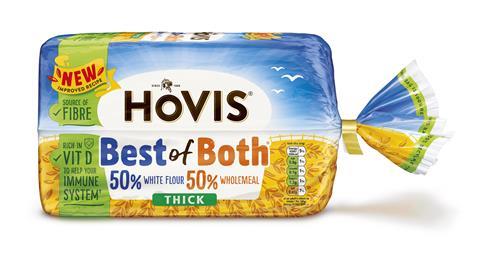Defra’s Bold Move: Clarifying Wholemeal Flour and 50/50 Loaves
In a significant announcement that shakes up the baking industry, the UK’s Department for Environment, Food & Rural Affairs (Defra) has clarified its stance on the use of the term “wholemeal” in relation to bread labeling. With consumers becoming increasingly conscious of their dietary choices, understanding these nuances is paramount.
The Latest Clarification on Wholemeal Bread
As part of newly published guidance in the document titled “Bread and Flour: Labelling and Composition”, Defra has specified that **the term “wholemeal” can only be used in the name of the bread if 100% of the flour ingredients are wholemeal.** This clarification certainly reignites the conversation around labeling practices.
The 50/50 Loaf Dilemma
For those pondering the fate of popular 50/50 loaves—think Hovis Best of Both or Kingsmill 50/50—the guidance confirms that **these products can still claim “wholemeal” in marketing** but only with the understanding that it relates to the flour composition, not the bread’s name. This is a huge win for consumers who enjoy the blend of flavors without the confusion over labeling.
Why This Matters
Consumer trust is at stake. **Clarity in labeling helps shoppers make informed decisions.** This change comes partly in response to criticism from the Real Bread Campaign, which raised concerns about practices where certain loaves labeled as wholemeal actually contained a blend of non-wholemeal flours. As the campaign rightly pointed out, how can consumers trust the label when it may not reflect reality?
Defining Wholemeal Flour
Defra’s guidance doesn’t leave much room for interpretation when it comes to defining wholemeal flour. According to their stipulations, **wholemeal flour is made from the entire edible grain**—the germ, endosperm, and bran—after the inedible parts are removed. This definition is crucial for maintaining standards and ensuring public health.

More Clarity for Consumers
This update isn’t just pivotal for wholemeal labeling. It also brings attention to other vital clarifications, including:
- Wheat Germ Inclusion: Bread can only be labeled as “wheat germ” if it contains a processed wheat germ content of 10% or more.
- Descriptive Terms: Terms like “white,” “brown,” and “stone-ground” lack legal definitions, opening room for brands to creatively label their products.
Defining Bread
Surprisingly, the term “bread” itself is quite broad in Defra’s guidelines. **Bread is defined as a doughy product made from flour and water**, which can include various other ingredients. However, certain products like buns, chapatis, and pita bread are not classified as bread under these regulations. This distinction is crucial for regulatory compliance.
The Future of Flour and Bread Regulations
The latest guidance also touches upon the future of food standards, noting that the fortification of flour with folic acid is set to be mandatory from **December 13, 2026.** This new regulation aims to enhance public health and nutritional standards across the board.
In the ever-evolving landscape of food marketing, **staying informed is your best strategy.** Keep an eye on your bread labels; understanding these regulations could very well change the way you choose your baked goods. The shift towards transparency is not just a regulatory necessity; it’s a necessary step towards healthier, more informed consumer habits.
For brands, **adaptation to these guidelines will become essential not just for compliance but for maintaining customer trust.** In the baking world, clarity and quality will always rise to the top—much like your favorite loaf!






